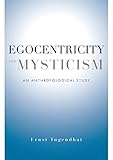Egocentricity and Mysticism : An Anthropological Study / Ernst Tugendhat.
Material type: TextPublisher: New York, NY : Columbia University Press, [2018]Copyright date: ©2016Description: 1 online resourceContent type:
TextPublisher: New York, NY : Columbia University Press, [2018]Copyright date: ©2016Description: 1 online resourceContent type: - 9780231169127
- 9780231542937
- 171/.9 23
- BJ1474 .T8313 2016
- BJ1474 .T8313 2016
- online - DeGruyter
- Issued also in print.
| Item type | Current library | Call number | URL | Status | Notes | Barcode | |
|---|---|---|---|---|---|---|---|
 eBook
eBook
|
Biblioteca "Angelicum" Pont. Univ. S.Tommaso d'Aquino Nuvola online | online - DeGruyter (Browse shelf(Opens below)) | Online access | Not for loan (Accesso limitato) | Accesso per gli utenti autorizzati / Access for authorized users | (dgr)9780231542937 |
Frontmatter -- CONTENTS -- TRANSLATORS' INTRODUCTION -- INTRODUCTION -- PART I. RELATING TO ONESELF -- 1. Propositional Language and Saying "I" -- 2. "Good" and "Important" -- 3. Saying "I" in Practical Contexts: Self-Mobilization and Responsibility -- 4. Adverbial, Prudential, and Moral Good; Intellectual Honesty -- 5. Relating to Life and Death -- PART II. STEPPING BACK FROM ONESELF -- 6. Religion and Mysticism -- 7. Wonder -- Addendum: On Historical and Nonhistorical Inquiry -- NOTES -- INDEX
restricted access online access with authorization star
http://purl.org/coar/access_right/c_16ec
In Egocentricity and Mysticism, Ernst Tugendhat casts mysticism as an innate facet of what it means to be human-a response to an existential need for peace of mind. This need is created by our discursive practices, which serve to differentiate us from one another and privilege our respective first-person standpoints. Emphasizing the first person fuels a desire for mysticism, which builds knowledge of what binds us together and connects us to the world. Any intellectual pursuit that prompts us to "step back" from our egocentric concerns harbors a mystic kernel that manifests as a sense of awe, wonder, and gratitude. Philosophy, the natural sciences, and mathematics all engender forms of mystical experience as profound as any produced by meditation and asceticism. One of the most widely discussed books by a German philosopher in decades, Egocentricity and Mysticism is a philosophical milestone that clarifies in groundbreaking ways our relationship to language, social interaction, and mortality.
Issued also in print.
Mode of access: Internet via World Wide Web.
In English.
Description based on online resource; title from PDF title page (publisher's Web site, viewed 02. Mrz 2022)


